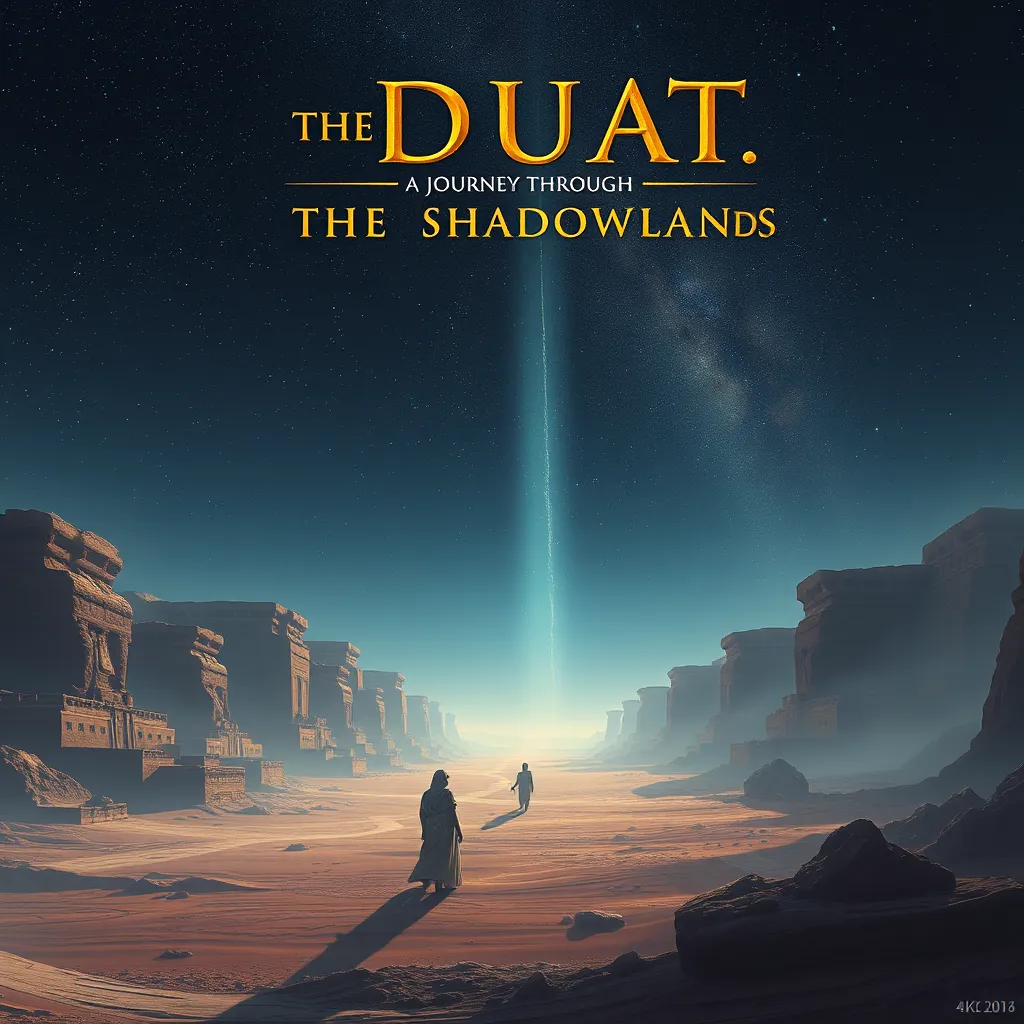The Duat: A Journey Through the Shadowlands
I. Introduction to the Duat
The Duat, in ancient Egyptian mythology, refers to the realm of the afterlife. It is a complex and multi-faceted concept that embodies the beliefs and values of ancient Egyptian culture regarding death and what lies beyond it. The Duat is not merely a place of rest but a journey that each soul must undertake to reach the eternal afterlife.
In Egyptian culture, the afterlife was viewed as a continuation of life on earth, and the Duat played a crucial role in this belief. It was a place where the soul would face challenges and trials, ultimately leading to judgment and the possibility of eternal life. The significance of the Duat is deeply interwoven with the values of morality, truth, and the cosmic order, which were essential to the ancient Egyptians.
II. The Geography of the Duat
The Duat is portrayed as a vast and varied landscape, consisting of multiple realms and features that symbolize different aspects of the afterlife journey. These realms often include:
- The Field of Reeds: A paradise akin to the earthly life, where souls could find peace and happiness.
- The Hall of Judgment: The place where souls are weighed and judged.
- Rivers and Lakes: Symbolizing the flow of time and the barriers to the afterlife.
- Deserts and Mountains: Representing trials and obstacles that souls must overcome.
Each of these landscapes carries symbolic meanings, often reflecting the ancient Egyptians’ views on life, death, and rebirth. The rivers in the Duat, for instance, often symbolize the passage of time, while the deserts represent the challenges and hardships that souls must face.
III. Deities and Spirits of the Duat
The Duat is populated by numerous deities and spirits that play essential roles in the afterlife journey. Key figures associated with the Duat include:
- Osiris: The god of the afterlife and resurrection, who presides over the judgment of souls.
- Anubis: The jackal-headed god responsible for mummification and guiding souls through the Duat.
- Ma’at: The goddess of truth and justice, who weighs the hearts of the deceased against a feather.
These gods and goddesses are not merely passive figures; they actively guide and protect souls on their journey, ensuring that the principles of truth and justice are upheld. Their involvement emphasizes the importance of ethical conduct during one’s lifetime.
IV. The Journey of the Soul
The journey of the soul through the Duat begins at the moment of death. Upon dying, the soul embarks on a perilous journey filled with various trials and challenges that test its worthiness. The process typically includes:
- Separation from the body and the initial passage into the Duat.
- Encounters with different deities and guardians, who may present obstacles.
- The need to recite spells and prayers from the Book of the Dead to navigate safely.
Souls must face various challenges, such as navigating through dark passages and avoiding deadly creatures, all while seeking guidance from the deities. This journey is crucial, as it determines the soul’s fate in the afterlife.
V. The Weighing of the Heart
One of the most significant events in the Duat is the Weighing of the Heart ceremony, which occurs in the Hall of Judgment. During this ceremony, the deceased’s heart is weighed against the feather of Ma’at, symbolizing truth and justice.
The significance of this ceremony lies in its representation of moral judgment. A heart that is lighter than the feather signifies a life lived in accordance with Ma’at, granting the soul access to the afterlife. Conversely, a heavier heart indicates wrongdoing, leading to dire consequences, such as being devoured by Ammit, the soul-eating demon.
VI. The Duat in Egyptian Texts and Art
The Duat is extensively documented in various ancient Egyptian texts, most notably in the Book of the Dead, a collection of spells and prayers designed to assist the deceased in navigating the afterlife. This text provides insights into the beliefs and rituals surrounding death and the Duat.
Artistic depictions of the Duat are also prevalent in tomb paintings and artifacts. These artworks often illustrate scenes of the afterlife journey, the deities involved, and the trials faced by souls. They serve not only as a guide for the deceased but also as a testament to the Egyptians’ rich cultural heritage.
VII. The Legacy of the Duat in Modern Culture
The concept of the Duat has transcended ancient Egyptian culture, influencing modern literature, films, and video games. Its themes of the afterlife, judgment, and the struggles of the soul resonate with contemporary audiences. Examples of this influence include:
- Literature such as Neil Gaiman’s “American Gods,” which explores various mythologies.
- Films like “The Mummy,” which portray elements of ancient Egyptian mythology.
- Video games such as “Assassin’s Creed: Origins,” which incorporates the Duat into its narrative.
These modern interpretations often adapt the ancient beliefs and stories to resonate with current themes of morality, identity, and the human experience.
VIII. Conclusion
The Duat holds profound importance in understanding ancient Egyptian beliefs about death and the afterlife. It reflects a complex worldview that emphasizes morality, justice, and the continuation of existence beyond death. The fascination with the Duat and its themes continues to captivate the imagination of people across cultures and eras, highlighting the universal human quest to understand what lies beyond the veil of life.
As we explore the legacy of the Duat, we recognize its enduring impact on our perceptions of the afterlife and the shadowlands, encouraging a deeper reflection on the beliefs and values that shape our understanding of life and death.




